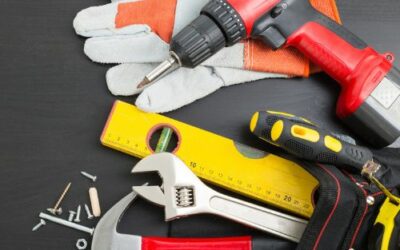Asset tracking software makes tracking your tools and equipment simple. With asset tracking software, you’ll be able to save time and money.
Knowing how to track your tools and equipment is essential for your business’ growth, as well as freeing up more time for you to work on other things.
How To Track Your Tools
Essentially, you’ll track your tools and equipment by using an asset tracking software. This software will have online profiles of your tools, where you can add information.
These online profiles will then be linked to your physical assets, so that any changes in location or asset status can be logged with ease, against the specific tools you’re tracking.
You’ll be able to add:
- Maintenance information
- Location data
- Bookings and checkouts
- Assignees to show who is in charge of which tools
- Tool quantities
All of this information is then visible and exportable in a streamlined reporting page. This information gives you the data you need to make better-informed business decisions, such as when to replace tools and where tools are for retrieval.
Using QR Code Asset Tags
You’ll link your physical tools to their digital profiles with QR code asset tags. These asset tags are stuck on your assets, and you’ll be able to scan them with your asset tracking software to retrieve the relevant profile.
Every time an asset’s tag is scanned, the last seen location of the asset is also updated, as well as the user who scanned the asset. This gives you a full audit trail of where assets have been.
Using asset tags speeds up your asset tracking processes as you’ll be able to edit asset information quickly, simply by scanning an asset’s tag.
For example, if you need to report an issue with an asset, all you need to do is scan the asset’s tag and report the issue. Your maintenance team will then be notified, minimising asset downtime and getting the asset fixed faster.
How Tracking your Tools Saves You Time and Money
Overall, the data you can add, manage, track, and update saves you time and money.
So, as you’ll be able to add depreciation information, you’ll be able to view when it’s time to replace an asset. Or, if an asset has had multiple issues reported against it, you’ll know that it’s more economical to replace it than continue to spend money on maintenance.
All of this data is exportable with your asset tracking software’s reporting features. This means that you’ll get a complete fixed asset register with all of the data you’ve collected against your assets.
Overall, you’ll know what you own and be able to view everything about your assets at ease in a quick, effective way. This speeds up everything from maintenance, with issues management, to asset retrieval, as you’ll be able to see where your tools are, ready for use.
To find out more about how to track your tools using asset tracking software, you’ll be able to book a demo with the team by pressing the button below.
You can also contact the team at team@itemit.com or fill in the form below to start your free trial.
Why not check out these blogs?
Using Asset Tracking Software in Healthcare
The Best Uses for a Fixed Asset Register
How Does IT Asset Management Work?
Start Tracking Your Tools Now

Try itemit
Choose a better way to track
your assets.
Start your free 14-day trial now!

Keep Learning
itemit Blog
Tips, guides, industry best practices, and news.
Why Your Library Needs Asset Tracking Software
Your library needs a tracking system so you know where your inventory is all of the time. Discover why an RFID asset tracking system is ideal!
How To Switch To Asset Tracking Software
Have more than a few assets and want to have more control over them? Read this post to find out how asset tracking software can help!
Tool Maintenance Made Easy
Would you like to keep your tools in a better condition? read this post now to find out how using pre-emptive maintenance can help!

